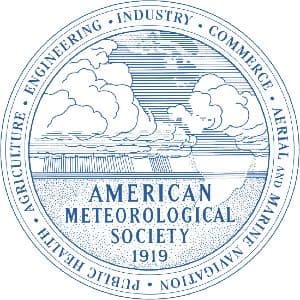Science
Separating Solar and Anthropogenic (Greenhouse Gas-Related) Climate Impacts During the past three decades a suite of space-based instruments has monitored the Sun’s brightness as well as the Earth’s surface and atmospheric temperatures. These datasets enable the separation of climate’s responses to solar activity from other sources of climate variability (anthropogenic greenhouse gases, El Niño Southern Oscillation, volcanic aerosols). The empirical evidence indicates that the solar irradiance 11-year cycle increase of 0.1% produces a global surface temperature increase of about 0.1 K with larger increases at higher altitudes. Historical solar brightness changes are estimated by modeling the contemporary irradiance changes in terms of their solar magnetic sources (dark sunspots and bright faculae) in conjunction with simulated long-term evolution of solar magnetism. In this way, the solar irradiance increase since the seventeenth century Maunder Minimum is estimated to be slightly larger than the increase in recent solar activity cycles, and smaller than early estimates that were based on variations in Sun-like stars and cosmogenic isotopes. Ongoing studies are beginning to decipher the empirical Sun- climate connections as a combination of responses to direct solar heating of the surface and lower atmosphere, and indirect heating via solar UV irradiance impacts on the ozone layer and middle atmosphere, with subsequent communication to the surface and climate. The associated physical pathways appear to involve the modulation of existing dynamical and circulation atmosphere-ocean couplings, including the El Nino Southern Oscillation (El Nino/La Nina cycles) and the Quasi-Biennial Oscillation. The Sun's Role in Past, Current and Future Climate Change Correlations of instrumental or reconstructed climate time series with indices of solar activity are often being used to suggest that the climate system is tightly coupled to the sun. Yet correlations have to be used with caution because they are not necessarily synonymous with cause-and-effect relationships. Therefore, it is critical to understand the physical mechanisms that are responsible for the signals. Independent tests can then be applied to validate or reject a hypothesized link. Spatial structures that are related to the processes that translate the solar influence into a climatic response can serve as such a test. A particularly powerful example is obtained by looking at the vertical extent of the solar signal in the atmosphere. Biographies Dr. Judith Lean is Senior Scientist for Sun-Earth System Research in the Space Science Division of the Naval Research Laboratory in Washington, DC. She has served on a variety of NASA, NSF, NOAA and NRC advisory committees, including as Chair of the National Research Council (NRC) Working Group on Solar Influences on Global Change and, most recently, the NRC Committee on a Strategy to Mitigate the Impact of Sensor De-scopes and De-manifests on the NPOESS and GOES-R Spacecraft. A member of the AGU, IAGA, AAS/SPD and AMS, she was inducted as a Fellow of the American Geophysical Union in 2002 and a member of US National Academy of Sciences in 2003. Dr. Caspar Ammann is a research scientist, in the Climate and Global Dynamics Division of the National Center for Atmospheric Research in Boulder, Colorado. He has a M.S. degree in Geography and Geology from the University of Bern, Switzerland and a Ph.D. in Geosciences from the University of Massachusetts. His primary research is focused on the climate of past centuries and millennia, and how the current changes compare to this natural background. He has reconstructed past climates as well as volcanic forcing from proxy (e.g., ice cores, corals etc..) records and then simulated climate variability and response to forcings in state-of-the-art coupled Atmosphere-Ocean-General Circulation Models.

